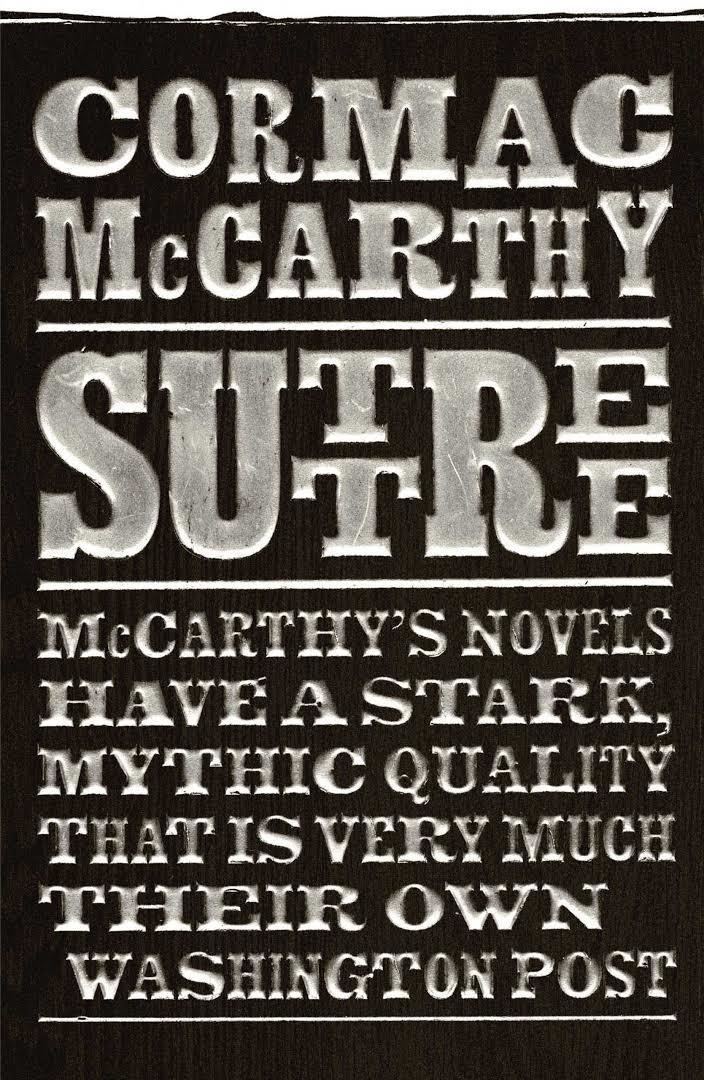8.4 /10 1 Votes8.4
Language English Media type Print (Hardcover) Originally published May 1979 OCLC 26322333 | 4.2/5 Goodreads Publication date May 1979 ISBN 0-679-73632-8 Country United States of America | |||||||||||||||||||||||||||||||||
 | ||||||||||||||||||||||||||||||||||
Genres Fiction, Autobiographical Fiction Similar Cormac McCarthy books, Fiction books | ||||||||||||||||||||||||||||||||||
Suttree cormac mccarthy book review
Suttree is a semi-autobiographical novel by Cormac McCarthy, published in 1979. Set in 1951 in Knoxville, Tennessee, the novel follows Cornelius Suttree, who has repudiated his former life of privilege to become a fisherman on the Tennessee River. The novel has a fragmented structure with many flashbacks and shifts in grammatical person. Suttree has been compared to James Joyce's Ulysses, John Steinbeck's Cannery Row, and called "a doomed version" of Mark Twain's Adventures of Huckleberry Finn. Suttree was written over a 20-year span and is a departure from McCarthy's previous novels, being much longer, more sprawling in structure, and perhaps his most humorous.
Contents
- Suttree cormac mccarthy book review
- Cormac mccarthy s suttree book review
- Plot summary
- Reception
- References
Cormac mccarthy s suttree book review
Plot summary
The novel begins with Suttree observing police as they pull a suicide victim from the river. Suttree is living alone in a houseboat, on the fringes of society on the Tennessee River, earning money by fishing for the occasional catfish. He has left a life of luxury, rejecting his father and family, and abandoning his wife and son.
A large cast of characters, largely misfits and grotesques, is introduced, one of which is Gene Harrogate, whom Suttree meets in a work camp. Harrogate was sent to the work camp for "violating" a farmer's watermelons. (Harrogate is referred to as the "moonlight melonmounter.") Suttree attempts to help Harrogate once he is released from the work camp, but this task proves to be in vain as Harrogate sets off on a series of misadventures, including using poisoned meat and a slingshot to kill bats ("flitter-mice" as Harrogate calls them) to earn a bounty on them, and using dynamite to attempt to tunnel underneath the city. Other prominent characters are prostitutes, hermits, and an aged Geechee witch.
His relationships with women all come to bad ends. One prostitute-girlfriend terminates the relationship in a moment of madness, smashing up the inside of their new car. The other woman with whom he becomes involved is killed by a landslide on the river bank. Suttree is also married before the book begins with a woman he apparently met during college. He left his wife with a son, who dies early on in the book.
Towards the novel's end, Suttree falls ill with typhoid fever and suffers a lengthy hallucination. This occurs after a black friend of Suttree's is killed in a fight with the police and his other friend Harrogate is arrested in a failed burglary attempt, so Suttree decides to leave town. In the end, he feels his identity is reaffirmed, and he leaves Knoxville, possibly for good.
Reception
Novelist Nelson Algren argued that the novel was “a memorable American comedy by an original storyteller.” Estimable reviews by such noted writers and literary critics as Anatole Broyard, Jerome Charyn, Guy Davenport, and Shelby Foote were followed by the Times Literary Supplement review which saw the novel as “Faulknerian in its gentle wryness, and a freakish imaginative flair reminiscent of Flannery O'Connor.” The influential profile writer and music journalist Stanley Booth observed that Suttree was “probably the funniest and most unbearably sad of McCarthy’s books...which seem to me unsurpassed in American literature.”
